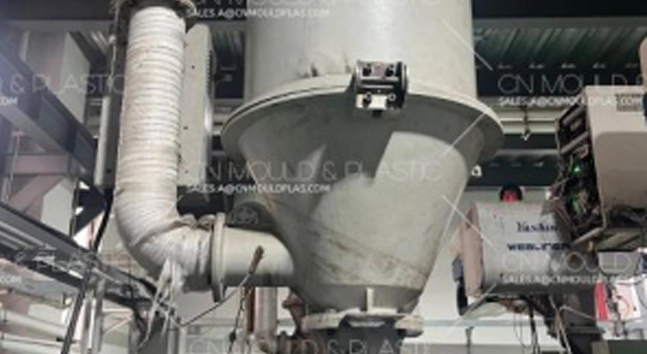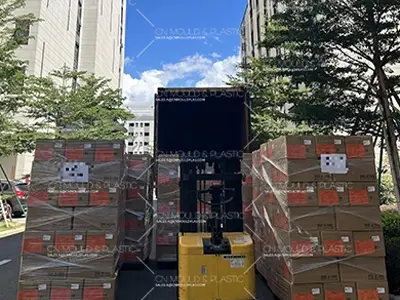Considering economic factors, sampling inspection methods are widely used in product quality inspection. Many countries have carried out systematic research on the standardization of sampling inspection and established sampling inspection standards for industrial products. For example, the MIL-STD-105D standard jointly formulated by the United States, the United Kingdom and Canada, the ANSI/ASQC Z1.4 standard of the United States, and China's GB2828 standard.
The so-called sampling inspection refers to a method of judging the overall quality of products by only sampling a part of all unit products in the product population (such as products produced in one shift).
When sampling from the population, in order to make the sample quality best represent the overall quality level, the most important principle is that there should be no preference, that is, the random sampling method should be used to draw samples. According to this principle, there are three sampling methods: simple random sampling, systematic sampling, and stratified sampling.
Generally speaking, if there are N products in a batch, and any n products have the same possibility of being drawn, such a method is called simple random sampling. For example, the method of drawing lots in a lottery is a simple random sampling. It must be noted that in simple random sampling, we should not consciously select good or bad products, or only select those placed on the surface or easily obtained for the sake of convenience.
Systematic sampling is carried out at regular intervals or by a certain numbering, and each time one or more samples are randomly selected from the products produced within a certain time interval or a section of numbered products. It is mainly used when the exact number of the population is unknown, and is more common in sampling of assembly line products.
Stratified sampling is a sampling method used to evaluate the quality of similar products with different processing equipment, different operators, and different operation methods.
For the inspection of injection-molded parts, generally 1 to 2 methods are commonly used. Among them, simple random sampling is common in the final inspection of FQC (Final Quality Control), and systematic sampling is common in the process inspection of PQC (Process Quality Control).
According to the different quality characteristics of the sampled products, sampling inspection is divided into two categories: variable sampling inspection and attribute sampling inspection.
For some quality characteristics of products, such as the service life of lamps, which change continuously, the method of quantitatively measuring the quality of a batch of products by the continuous scale of the sampled samples is called the variable sampling inspection method.
Some product quality characteristics, such as the number of defects of impurity spots, the number of defects of color difference, and whether they are qualified or not, can only be measured by discrete scales. The method of measuring by discrete scales after sampling is called attribute sampling inspection. In attribute sampling inspection, the quality of unit products is measured by counting, and the average quality is generally used for the quality of the whole batch of products. Attribute sampling inspection is a method of judging the average quality of the whole batch of products according to the average quality of the sampled products.
That is, a random sample is drawn from a batch of products, and whether the batch is qualified is judged according to the number of non-conforming products in the sample.
A random sample is drawn from the batch at one time, and whether the batch is qualified is judged according to the number of non-conforming products in the sample. If it is unqualified, a 100% inspection is carried out, and the non-conforming products are selected for rework or replaced with qualified products. Such a method is called selective sampling inspection.
It is a method of appropriately adjusting the "strictness" of inspection according to quality information such as past inspection results. Under normal circumstances, a normal sampling plan is adopted. If the batch quality is good, a relaxed inspection method is used; if the batch quality is poor, a tightened sampling plan is used instead.
This method is suitable for continuous production methods such as conveyor belts. During inspection, a combination of sampling inspection and 100% inspection is used, and all non-conforming products found are replaced with qualified products.
Each sampling can judge the batch quality in three states: qualified, unqualified and to be further checked. For the batches to be checked, further sampling inspection is carried out until a judgment of qualified or unqualified is made. If the number of inspection steps is two, it is called double sampling inspection; if it is three steps, it is called triple sampling inspection; if the number of inspection steps cannot be determined in advance, it is sequential sampling inspection.
Methods 3 and 4 are currently less used in the inspection of injection-molded parts, and methods 1, 2 and 5 are mainly used.
(1) Unit Product:The basic unit divided for the need of sampling inspection is called the unit product.
(2) Inspection Lot:The unit products collected for sampling inspection are called the inspection lot, referred to as the lot for short.
(3) Lot Size:The number of unit products contained in the lot is called the lot size, generally expressed by "N".
(4) Sample Unit:A unit product drawn from the lot for inspection is called a sample unit.
(5) Sample:The totality of sample units is called the sample.
(6) Sample Size:The number of sample units contained in the sample.
(7) Non-conformity:The quality characteristic of a unit product does not conform to the regulations, which is called a non-conformity.
(8) Classification of Non-conformities:According to the importance of the quality characteristics representing the quality of the unit product, or according to the severity of the non-conformity of the quality characteristics, the non-conformities are generally divided into Class A non-conformities, Class B non-conformities and Class C non-conformities.
(9) Class A Non-conformity (CR):The extremely important quality characteristics of the unit product do not conform to the regulations, or the quality characteristics of the unit product do not conform to the regulations extremely seriously, which is called a Class A non-conformity.
(10) Class B Non-conformity:The important quality characteristics of the unit product do not conform to the regulations, or the quality characteristics of the unit product do not conform to the regulations seriously, which is called a Class B non-conformity.
(11) Class C Non-conformity:The general quality characteristics of the unit product do not conform to the regulations, or the quality characteristics of the unit product do not conform to the regulations slightly, which is called a Class C non-conformity.
(12) Class A Non-conforming Product:A unit product with one or more Class A non-conformities, and possibly also Class B or Class C non-conformities, is called a Class A non-conforming product.
(13) Class B Non-conforming Product:A unit product with one or more Class B non-conformities, and possibly also Class C non-conformities, but not containing Class A non-conformities, is called a Class B non-conforming product.
(14) Class C Non-conforming Product:A unit product with one or more Class C non-conformities, but not containing Class A and Class B non-conformities, is called a Class C non-conforming product.
(15) Number of Non-conforming Products per 100 Unit Products:Number of non-conforming products per 100 unit products = (total number of non-conforming products in the lot / lot size) × 100
(16) Number of Non-conformities per 100 Unit Products:Number of non-conformities per 100 unit products = (total number of non-conformities in the lot / lot size) × 100
(17) Lot Quality:The quality of a single submitted inspection lot (expressed by the number of non-conforming products per 100 unit products or the number of non-conformities per 100 unit products) is called the lot quality.
(18) Process Average:The average quality of a series of initially submitted inspection lots (expressed by the number of non-conforming products per 100 unit products or the number of non-conformities per 100 unit products) is called the process average. The initially submitted inspection lots do not include the inspection lots that are determined to be unqualified in the first inspection and resubmitted after rework.
(19) Acceptable Quality Level (AQL):In sampling inspection, the upper limit of the process average of continuously submitted inspection lots that is considered acceptable is called the acceptable quality level.
(20) Some Symbols and Their Meanings
1. N: Lot size
2. n: Sample size
3. Ac: Acceptance number
4. Re: Rejection number
5. P: Lot quality
6. P: Process average
7. AQL: Acceptable quality level
8. Pa: Probability of lot acceptance
9. ASN: Average sample number
10. IL: Inspection level

